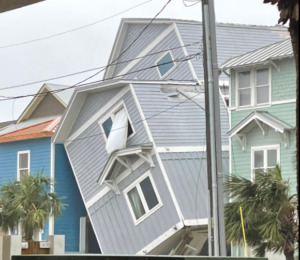 Mice, mold and leaking bathtubs are among the last discoveries homebuyers want to make after moving into a new home.
Mice, mold and leaking bathtubs are among the last discoveries homebuyers want to make after moving into a new home.
But that’s exactly what a client of Oakland, Calif.-based financial planner Cathy Curtis found shortly after closing.
“The first week she moved in, she emailed me in a panic that there are mice, she needs a new furnace, and the ducts, bathtubs and kitchen cabinets need to be replaced,” said Curtis. Total cost to fix everything: tens of thousands of dollars. “I’m surprised that more of this didn’t come up in the inspection,” she said.
Home inspections, it turns out, are much more limited than many first-time buyers realize.
“The purpose of a home inspection is to look for material defects of a property: things that are unsafe, not working, or that create a hazard,” explained Kurt Salomon, president of the American Society of Home Inspectors and an inspector based in Salt Lake City. Homebuyers, however, “think we can see through walls and predict the future,” he said.
Home inspectors don’t test for environmental safety, such as lead in the paint or radon in the air, although they might recommend that a potential buyer do so. Inspectors can also overlook mold or vermin, if evidence of their existence is hidden behind floorboards or otherwise obscured.
Nor do they examine more pedestrian child-safety issues, such as how easy it is to get into cabinets or fall down staircases. And most inspectors lack specific expertise in pool safety, one of the biggest risks for young children.
That means buyers not only need to take matters into their own hands, they should also budget for unexpected expenses post-purchase. Here are five ways to eliminate, or at least mitigate, those surprise costs:
1. Interview your home inspector. Many buyers, especially first-timers, accept their real estate agent’s recommendation for a home inspector. After all, how different could two inspectors be? Very different, it turns out.
“The value an inspector brings is his knowledge, and not every inspector is as educated as the next one,” said Curtis Niles, president of the National Association of Home Inspectors and a home inspector in Upper Darby, Pa.
Niles said buyers should ask potential inspectors how much experience they have, whether they get on the roof of the home, and whether they have particular expertise in child safety, environmental friendliness or any other special concerns. If the property has a pool, the inspector should have specific knowledge and experience about pool safety.
2. Look for common hazards. Older homes often have outdated railings, with spaces so wide that babies and toddlers can crawl through them.
“Back in the ’50s, the space between railings was over 6 inches. An infant can crawl through that and fall down. Now, the rule is 4 inches,” said Salomon.
Backyard pools should be enclosed by gates that are at least 6 feet tall, with self-closing hinges and latches at least 54 inches off the ground, out of reach of young children.
Home inspectors generally don’t test for environmental toxins such as lead paint, asbestos and radon, all of which pose significant risks and can be costly to remove, although they might point out that homes are at risk for such dangers.
Homes built before 1978, for example, often contain lead, and 9-by-9 floor tiles in basements are likely to contain asbestos.
If buyers are aware of these toxins before closing, they can ask the seller to pay for all or some of the abatement, containment or removal costs. A radon system, for example, can cost about $1,500, Salomon said. Lead paint abatement, which requires an EPA-certified professional, can be similarly expensive, costing double or triple a standard paint job.
Older houses also often have outdated electrical systems, which can require upgrades ranging from costly new wiring to simple outlet covers. Every bedroom should have a smoke detector, too, and every floor a carbon monoxide detector.
While these additions are relatively inexpensive, buyers can shorten their own to-do lists by asking the sellers to make the updates.
3. Think about your current, and future, lifestyle. So much of home safety comes down to who’s living there. A three-floor home with outdated railings and electrical systems that was perfectly safe for empty-nesters in their 60s can be filled with dangers for a young couple with an infant, seniors who can no longer make their way upstairs easily or a Chihuahua.
When Julie Lowe, 38, and a mother of two in Seattle, bought her first house pre-parenthood, she didn’t consider child safety because it wasn’t on her radar. But as she and her husband shopped for their second house as parents, they focused more on safety. She also wanted all three bedrooms on one floor for easy access to babies in need of comforting in the middle of the night, as well as for security.
When her daughter’s bedroom was on the lower level and at the front of the house, Lowe says she “had a paranoia about someone breaking in and snatching her.” But in the new house, she says, “she and her brother are steps away. It won’t be so great when they’re older, but for small children, having three bedrooms grouped at the back of the house is a luxury,” she says.
Inspectors often tailor their checklist to what they perceive to be the buyers’ specific needs. If a couple with children is purchasing a Victorian house with widely spaced railings, Salomon says he wouldn’t make as big a deal about the safety hazard as he would if the buyers had young children. “I’ll write it up different for a single person with kids, versus a couple with kids,” he says.
4. Consider bringing in additional safety experts. In addition to paying a home inspector for extra services such as lead testing, some buyers decide to work with electricians, chimney inspectors or child safety professionals in advance.
Larry Stone, founder of Safety Matters, a Chicago-based childproofing company, said he often works with buyers before they move into a new house to make sure it’s safe for little ones. (While buyers will want to wait until they close on a house to make any improvements, they can get cost estimates before making their final purchase decision.)
Some of the most common solutions include covering railings with custom-fit plexiglass so children can’t fit through them or get their heads stuck, installing alarms and covers around pools, and installing window bars or stops on low windows.
Stone also installs high locks on doors, out of reach of small children, and covers electrical outlets with safety plates.
5. Spread out costly repairs and updates. While things posing an immediate danger need to be addressed right away, other changes can happen more slowly.
“My job is to talk her out of doing all this right now,” said Curtis of her client with the many unexpected problems. Instead, Curtis recommends spreading out repairs and updates over time, so budgets don’t have to survive the simultaneous shock of a down payment, new mortgage payments and contracting work.
Bottom line: To avoid unexpected costs after closing, homebuyers should consider going beyond a standard home inspection, especially if they’re living with seniors, children, or pets. Then they can ask the seller to cover some of the costs or at least factor them into their budget, and avoid ugly surprises after the move-in date.
Source: Orlando Sentinel





